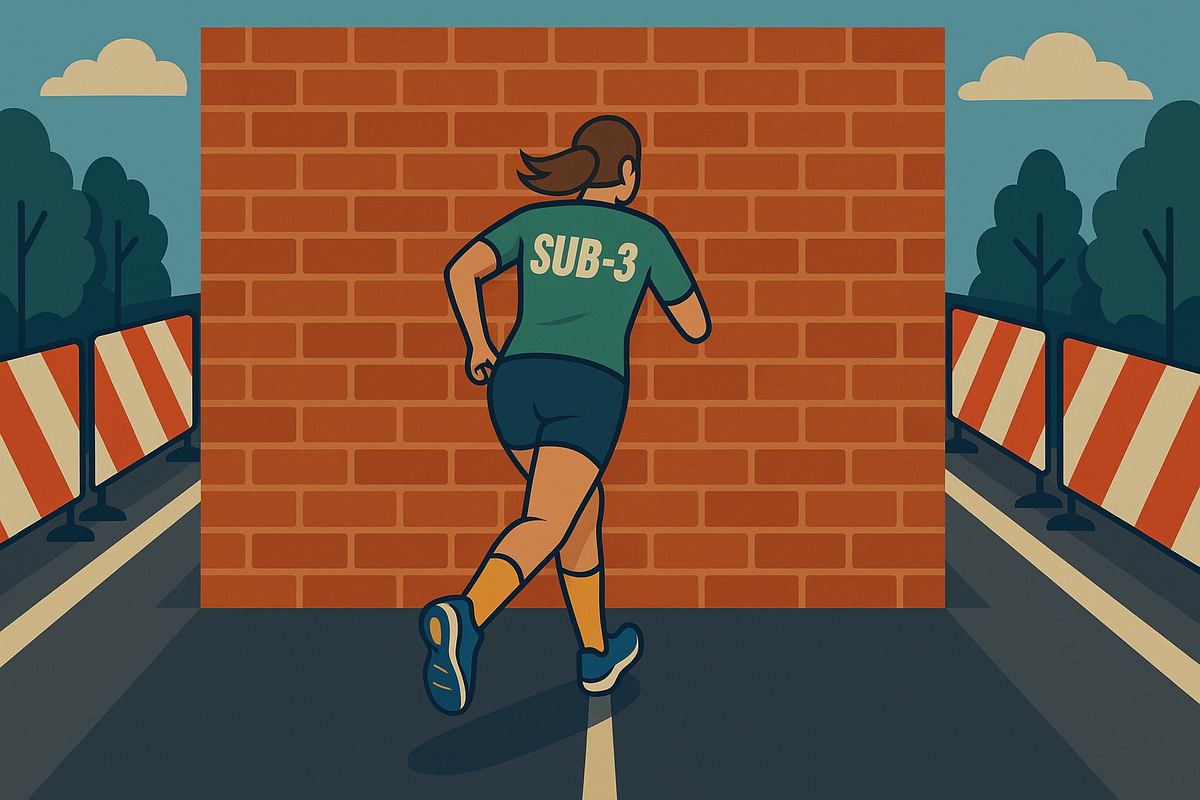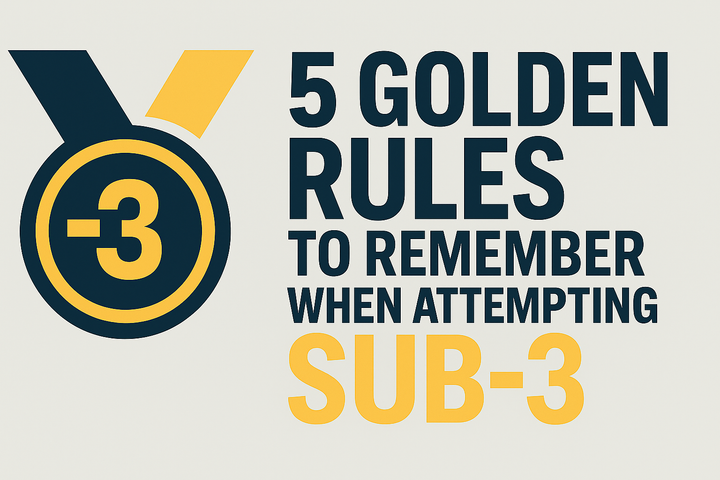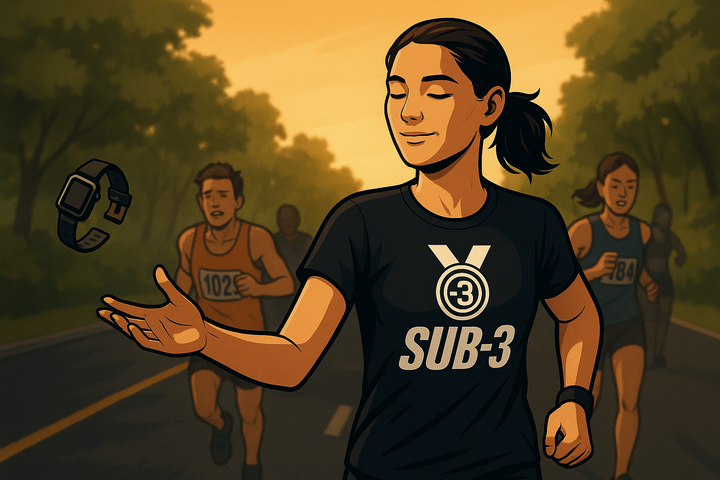How to avoid hitting the wall during a sub-3 marathon attempt
Why runners hit the wall in the marathon — and how smart pacing and fuelling can help you power straight through it.

The idea of “hitting the wall” is woven into marathon folklore – a rite of passage most runners fear, and hope to skip. It was given a cartoonishly literal spin in Run Fatboy Run, where Simon Pegg’s character crashes into a giant brick wall blocking the entire road. Is it absurd? Sure. But it captures something real: the crushing physical and mental blow that hits when your body runs out of fuel.
What’s actually happening is physiological. As your glycogen stores – the body’s preferred energy source during sustained, hard effort – become depleted, the body switches to burning fat. That sounds efficient, but fat is a much slower, less accessible fuel source at marathon pace. The result? You slow dramatically, coordination may wobble, and everything starts to feel like hard labour. Your stride shortens, your arms grow heavy, and the mental fog rolls in.
I’ve been there. Twice. Both during my early attempts at the Robin Hood Marathon in Nottingham (2005 and 2010). Back then, mid-race fuelling was seen to be unnecessary in some circles. I hit the wall at almost exactly the same point both times - Holme Pierrepont, for those familiar with the sadly defunct course. My legs turned to rubber, the world closed in, and forward motion felt like dragging myself through treacle. But I kept going – and just like a plane pushing through storm clouds, I eventually broke through to calm skies. The wall passed. It always does.
To reduce the risk of ever hitting it, you need to plan your fuelling like it’s part of your race strategy – because it is. Here’s how to stack the odds in your favour:
- Carb loading in the 2–3 days before the race – focus on white rice, potatoes, oats or pasta. Skip the depletion phase; it’s not necessary for most sub-3 runners.
- Eat a light breakfast 2–3 hours before the start – simple carbs, nothing high in fat or fibre.
- Take on carbs pre-race – sports drinks or bars up to 30 minutes before the gun goes off.
- Fuel consistently during the race – aim for 40–60g of carbs per hour via energy gels or drinks. Don’t wait until you’re tired to start.
- Practise all of it in training – especially on your long runs. Your gut needs training as much as your legs.
And once the finish line is behind you, refuel fast – ideally within 20 minutes – with something carb-rich to kickstart recovery. Chocolate milk, a banana and bagel, or a recovery drink all work.
Even with perfect fuelling, the final 10K can bite – especially if you’ve been a little too ambitious early on. But dial in your nutrition, respect the distance, and that dreaded wall becomes less of an obstacle and more of a memory from another life – one best left in comedy films.
Enjoyed this article? Help keep Sub-3 running — support us with a coffee.
To help fund the running of the site, Sub-3 is an Amazon Associate and earns from qualifying purchases. We only recommend gear or kit that has genuinely helped in our own running and that we believe is worth considering.



